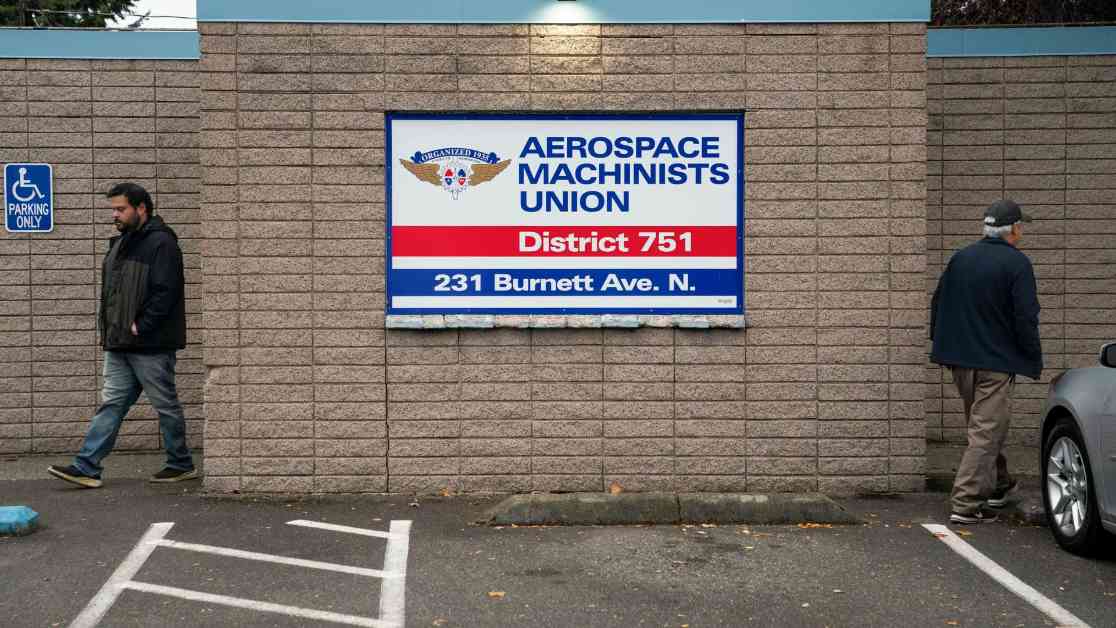Boeing workers from the International Association of Machinists and Aerospace Workers District 751 are currently on a strike and have gathered on a picket line near a Boeing production facility in Renton, Washington. The workers will be voting for the third time on a new contract proposal on Monday. If the majority approves the offer, it will put an end to the seven-week work stoppage that has affected Boeing’s airplane production.
The new contract proposal includes a 38% raise over four years, which is an increase from the 35% raise that was proposed and rejected by the workers last month. Initially, the strike began over a proposal with 25% raises, while the union had aimed for around 40% pay increases. According to Boeing, the average pay for machinists will be $119,309 by the end of this new contract proposal.
One of the main concerns for the workers is the high cost of living in the Seattle area, where most of Boeing’s aircraft are manufactured. The union has warned the workers that this new deal might be the best offer they will receive. They emphasized that there is a limit to what can be achieved through negotiations and strikes, and they risk receiving a less favorable offer in the future if they do not accept this proposal.
The union has encouraged the workers to consider the long-term benefits of the proposed contract and to lock in the gains they have made. They believe that accepting this agreement will pave the way for future negotiations and improvements. Boeing’s CEO, Kelly Ortberg, has also urged the workers to return to work and focus on rebuilding the business and delivering high-quality airplanes. He acknowledged the challenges faced by the employees, customers, suppliers, and communities during the strike.
Boeing has taken steps to secure its finances by raising over $20 billion. As the workers prepare to vote on the new contract proposal, the outcome will determine the future of Boeing’s production and the livelihoods of thousands of employees. It is a critical moment for both the company and the workers, as they strive to reach an agreement that benefits all parties involved.

















